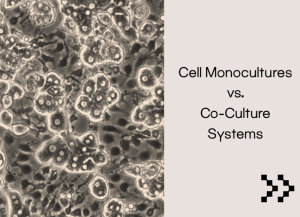
When it comes to cell culture, there is much debate over the advantages and challenges of conventional monocultures versus co-culture systems. Co-cultures are composed of two different cell types, as opposed to a single cell type, that are allowed to freely interact within the culture – such as the hepatocyte/stromal cell combination characteristic of Visikol’s HUREL® Micro Livers. Both methods have their respective niches in the field, but it is important to consider that natural tissues have complex and dynamic compositions with multicellular interactions. Understanding how the various cell types communicate with one another is valuable to the development of effective treatments because co-culture systems promise an optimal tissue-specific microenvironment for in vitro studies.
While co-cultures do have clear advantages in the field due to effective mimicry of extracellular matrix (ECM) and multicellular interactions, there are a few challenges that ought to be highlighted as well.
Co-culture systems present a useful platform for a diverse range of applications, such as tumor growth, tissue regeneration, and the adaptive immune systems. Key attributes of this method are as follows: improved functionality of target cells, heightened understanding of cell-cell and cell-ECM interactions, and accurate representation of in vivo tissues. Intercellular crosstalk is vital to many processes within the human body – therefore, simulation of an environment in which multiple cell types can communicate is important. Enabling the target cell to behave as it would naturally gives scientists more vivid insight into the tissue at large and potential drug interactions. A notable challenge to the co-culture method is that it cannot mimic the ECM precisely. Popular methods for generating cellular scaffolds can provide an effective 3D environment but imitating the unique structure or appearance of the actual ECM is difficult. This demonstrates a need for technologies that support the construction of elaborate, ECM-like scaffolds.
Overall, there is a convincing amount of research to validate the use of co-culture over monoculture in this era of science. The present challenges for this method do not pose an obstacle but rather an opportunity for improvement and innovation. As an emerging leader in the cell culture industry, Visikol understands what methods best suit our customers’ needs. Please reach out today to find out what Visikol can do for you.
